Connecting mains cable
DANGER
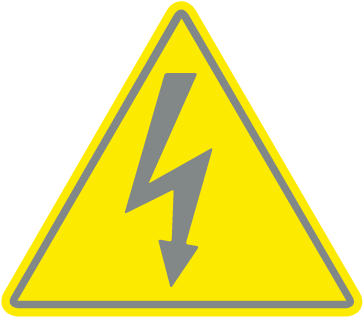
Risk of death due to electrical shock and discharge!
De-energise device and secure against being switched on again.
CAUTION
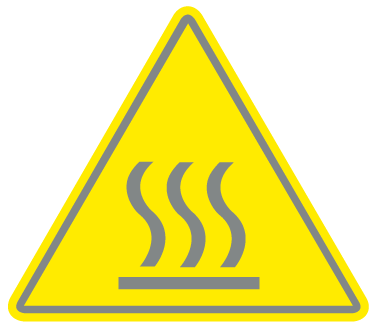
Risk of fire due to overcurrent and heating of the mains cable
If mains cables are too small, they can heat up and cause a fire.
- Use a suitable cross-section.
- Install line circuit breaker to secure against overcurrent.
INFO

Whenever working on the inverter, only ever use insulated tools to prevent short-circuits.
INFO

Make sure that the phases of the AC terminal and in the mains supply match.
The 4-wire AC connection (3L/PE without N) is only possible in symmetrical networks.
- Disconnect the power supply from the mains.
- Secure AC connection against being switched on again.
- Switch the DC switch on the inverter to OFF.
- Correctly lay the mains cable from the power distributor to the inverter.
- Install the necessary safety devices – line circuit breakers, residual current circuit breakers – in the mains cable.
- Screwing on AC terminal compartment
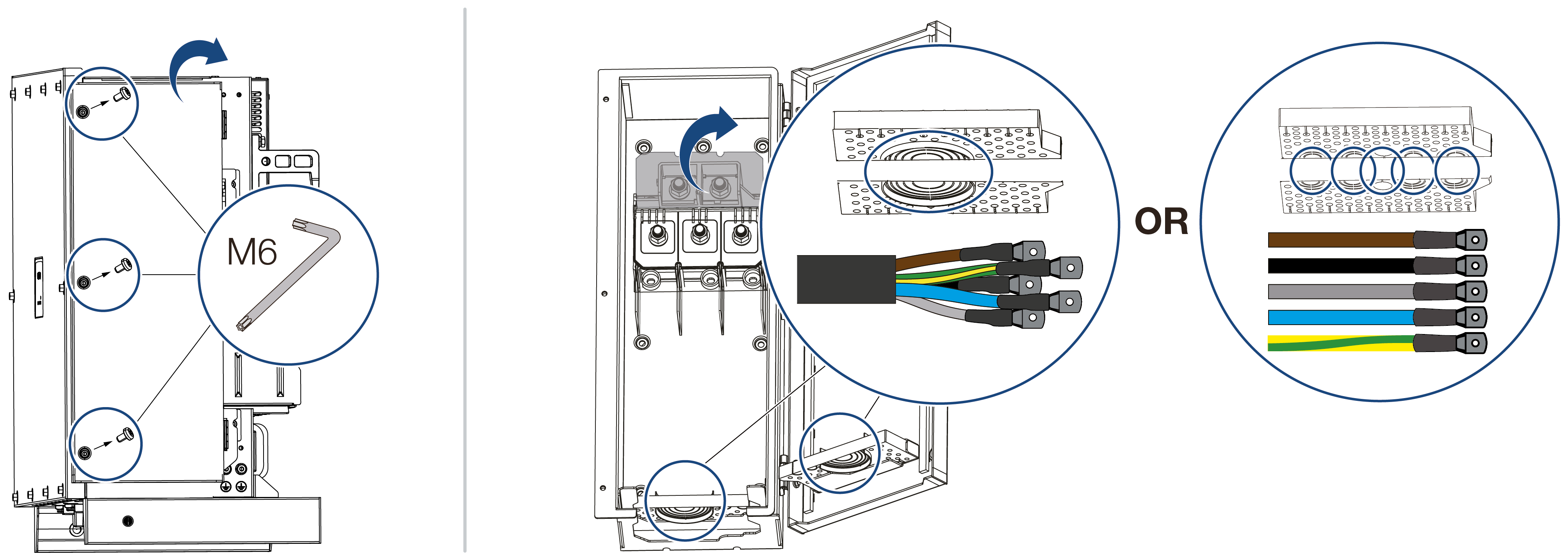
- Use cable gland to suit the cable type.
- Strip insulation off mains cable.
- Fit suitable heat-shrinkable sleeves onto the wires. Strip insulation off ends of conductors and crimp the cable ring lug onto the ends of conductors.

- Connect the mains cable to the AC terminal according to the labelling.
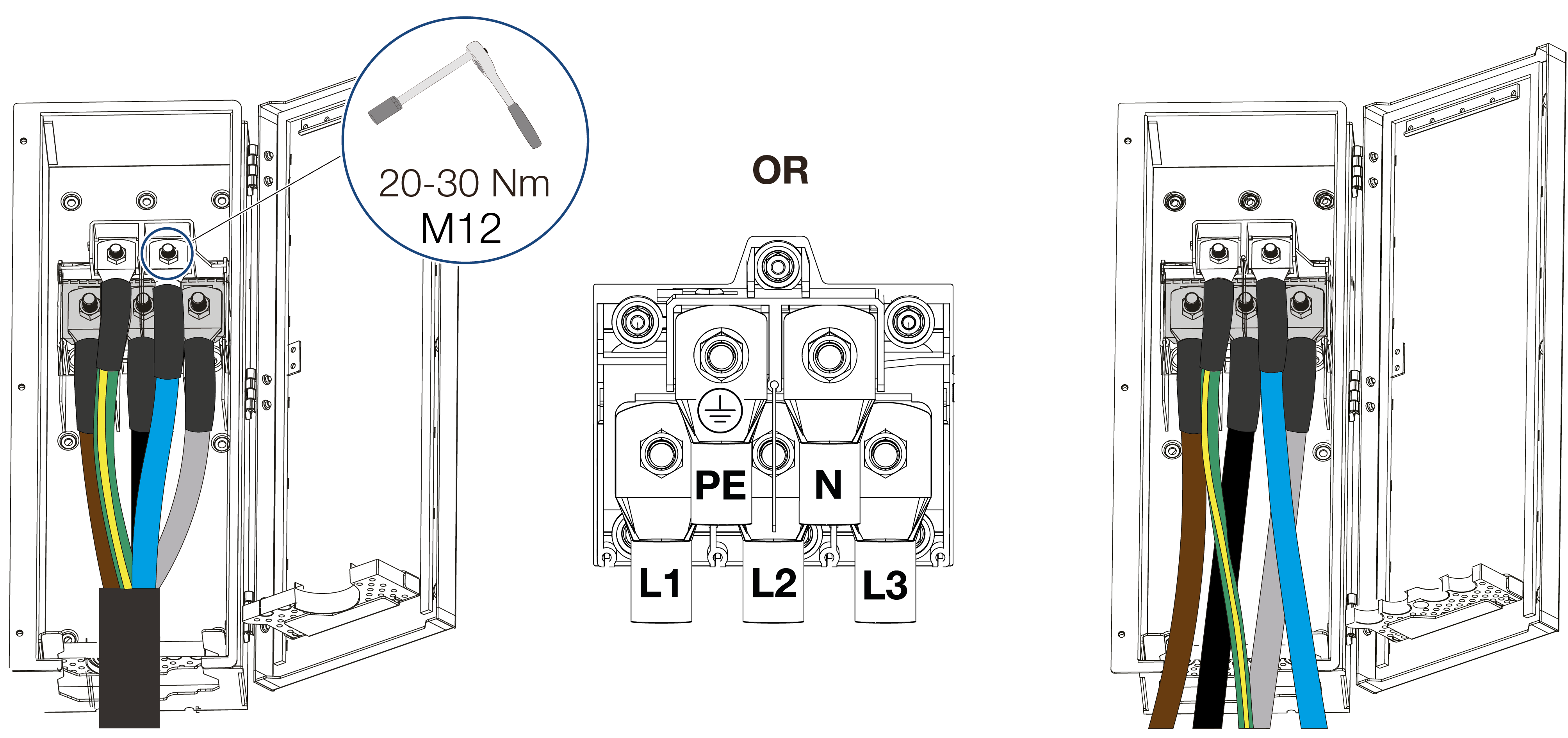
- Close the AC terminal compartment and screw the cover tight.
Tightening torque: 3–4 Nm. - Attach the cable to the inverter using a C busbar and strain relief.
The right-hand inverter handle features two M6 attachment options for this purpose. 
- In countries in which a second PE connection is required, connect this at the marked place on the housing (outside).
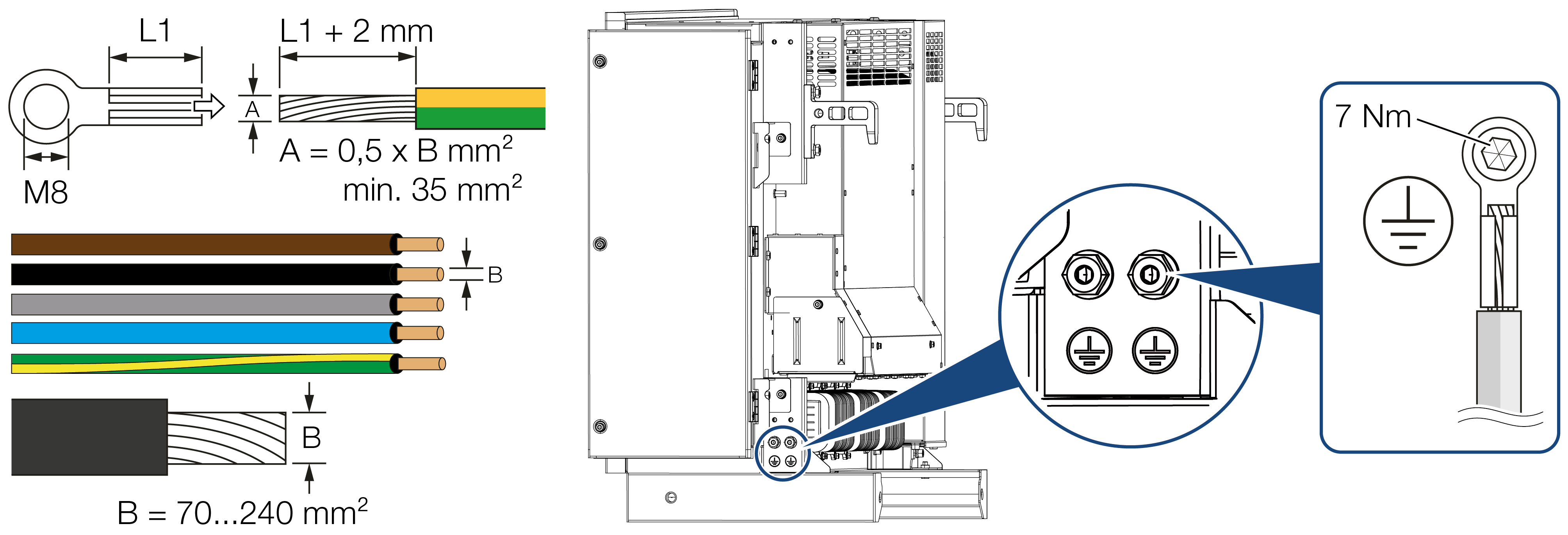
- Mains cable connected